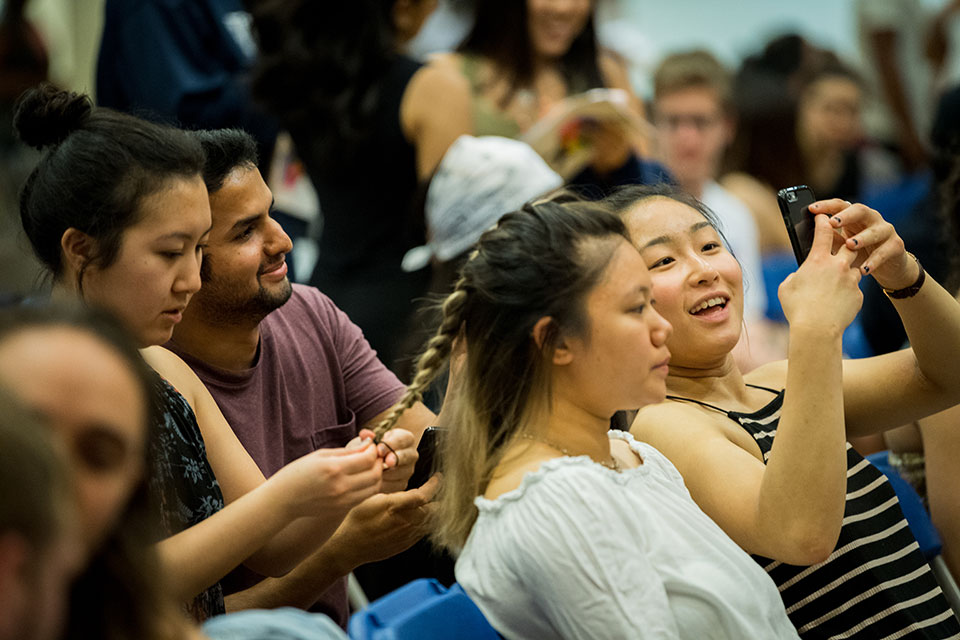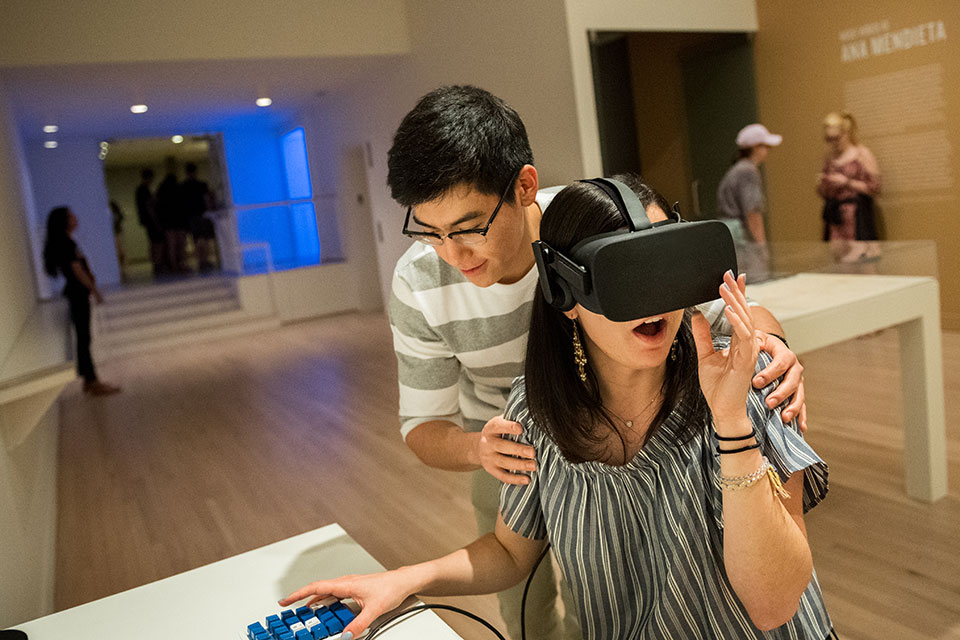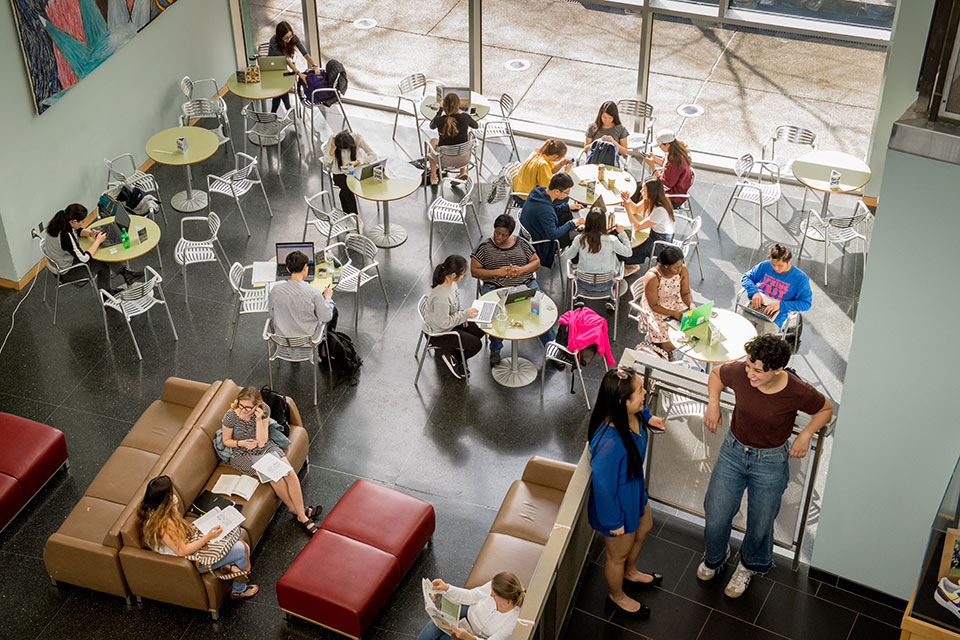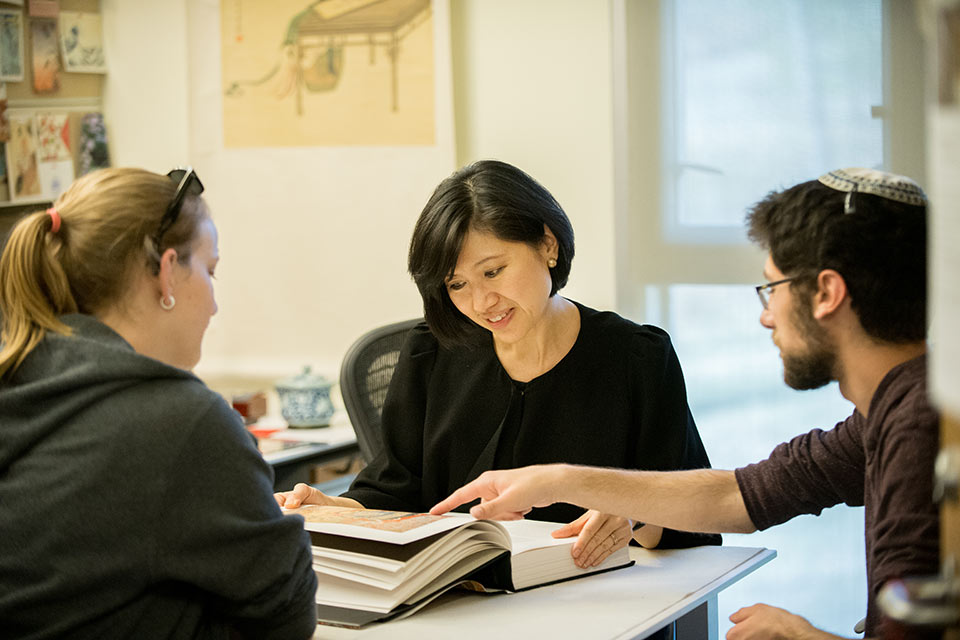Using the Brand Narrative
This should vary from piece to piece. Rather than copying and pasting the narrative into your communications, which will feel generic, think about how your subject matter reflects the narrative’s messages and ideas in different and interesting ways. Below are some examples of how the brand themes come to life through news stories, website copy and other marketing materials.

Brandeis is considerate, genuine and friendly.

Brandeis is embracing of the unconventional and creative.

Brandeis is inviting and open to engaging across difference, even if that requires uncomfortable conversations, with the goal of making Brandeis and the world a better place.
Examples
Expand All
Brandeis endures as a place where the integrity of research will not be compromised. As such, for seven decades, it has welcomed the most curious minds. These men and women systematically study our world — from small molecules to black holes, from cancer cells to climate change — so that we can better understand our place in it.
An intellectual culture and a reverence for scholarship are defining attributes of Brandeis. We take nothing for granted. We question openly at the same time that we hold ourselves to the highest scholarly standards.
Science at Brandeis, he explains, isn’t all about prestige; it’s about the work, and a mindset of learning that goes both ways. Katz’s work with mice and rats is emblematic of the interdisciplinary approach common among researchers at Brandeis, blending elements of psychology, biology, math and physics to better understand the neuroscience of taste — and, more broadly, the interdependence of the senses as the brain’s primary agents of perception.
The Schusterman Center is dedicated to supporting and growing the field of Israel Studies by drawing on scholarship from a wide range of disciplines and viewing its work not only through the lens of scholarship, but also nurturing a worldwide community of people knowledgeable about Israel through teaching, lectures, conferences, grants, films and art exhibitions.
Occupational segregation has major wealth repercussions for black and Latino workers across a variety of sectors, from construction to finance, according to a new report. This study comes from the Institute on Assets and Social Policy (IASP), a team that has done years of foundational research on the racial wealth gap in the United States. IASP researchers, led by Director Thomas Shapiro, are now digging in to specific structural causes of the gap, such as work. The team partnered with The Workers Lab, an Oakland, California-based incubator that invests in solutions to improve conditions for low-wage workers, to bring its research before labor unions and workers’ advocates, where it could have maximum impact.
The Alfred P. Sloan Foundation has awarded Assistant Professor of Physics Marcelle Soares-Santos a Sloan Research Fellowship, one of the most competitive and prestigious awards available to early-career researchers. Soares-Santos studies the nature of the accelerated expansion of the universe using data from some of the most powerful telescopes ever built. She was part of the team that detected a neutron star merger for the first time and is currently helping to devise an entirely new method of determining the Hubble constant. Past recipients of the fellowship include 47 Nobel Prize winners, including physicists Richard Feynman and Murray Gell-Mann.
We are proud that the Brandeis Library is one of the university’s most popular locations. It is where our community can collaborate, whether conversing over coffee in our café or producing content in our technology and media labs. It is a hub of activity to explore, and a classroom where you can learn how to explore: our staff will guide you through the research process, help you navigate new and unique scholarly resources, or show you how to design and fabricate new approaches to a challenging problem.
Even before she arrived at Brandeis from Beijing, Yinan Liang ’20 knew she wanted to pursue a career in psychology: She’s always been fascinated by what makes people tick. At Brandeis, she’s been able to channel this interest into research. She’s worked in professor Angela Gutchess’ laboratory studying the relationship between memories, depression and culture and currently serves as a research assistant at Brigham and Women’s Hospital in Boston. At Brigham and Women’s, she provides social and support and assists in translations for immigrant Chinese women who are receiving obstetric and gynecological care. “I like that there are no correct answers for how every individual thinks and behaves,” Liang said. “Psychology is complicated — like solving a puzzle.”
The Heller School was founded in 1959 to answer a pioneering question: How can we use policy to work towards the well-being of all members of society? Through graduate education, the pursuit of applied interdisciplinary research and active public engagement, we have a long history of responding to the changing needs of vulnerable populations.
The Leonard Bernstein Festival of the Creative Arts at Brandeis honors his legacy as an artist, an educator, an activist and a humanitarian. He believed in the power of art to affect social change and we proudly carry on that tradition.
At its core, Brandeis is animated by a set of values that are rooted in Jewish history and experience. One of these values is an emphasis on critical thinking, including self-criticism. At Brandeis, students and faculty are encouraged to question openly and accept nothing without study, debate and reflection.
How do you stay competitive?
“We pride ourselves on being super inclusive. Lots of programs have tryouts and cuts and a notion of debate as an activity that is exclusive. Debate helps develop social and professional skills, so we can create an environment where people want to learn and get better — we’re accepting and encouraging even when we fail. ... People feel like they find a home on this team.”
The Rose Art Museum embodies the dynamic energy of Brandeis University — it is a celebration of the daring and new, of those individuals who strike out on their own and take risks, and the exciting challenge of creating art across boundaries. It is a collection unique to higher education, perfectly befitting Brandeis’ distinct guiding spirit.
While Henriquez has aggressively pursued his own extracurricular political education, he credits Brandeis for encouraging debate and creating a community where students have to confront different ideas and philosophies. “At the end of the day, we can all have a soda and talk about common stuff, like here at Brandeis, which has united people on all different sides,” Henriquez said. “How are you going to start a dialogue if you don’t open up? I think it’s repetitive to just hear your side. We have to find common ground and embrace different points of view, even if you don’t agree.”
By sponsoring or facilitating new interdisciplinary courses, lectures, seminars, films, conferences and other events, the Jack, Joseph and Morton Mandel Center for the Humanities (MCH) helps students and faculty explore major themes of human experience. Through their participation in MCH events and programming, Brandeis students and faculty from all parts of campus become more informed, engaged and humane citizens of the world.



